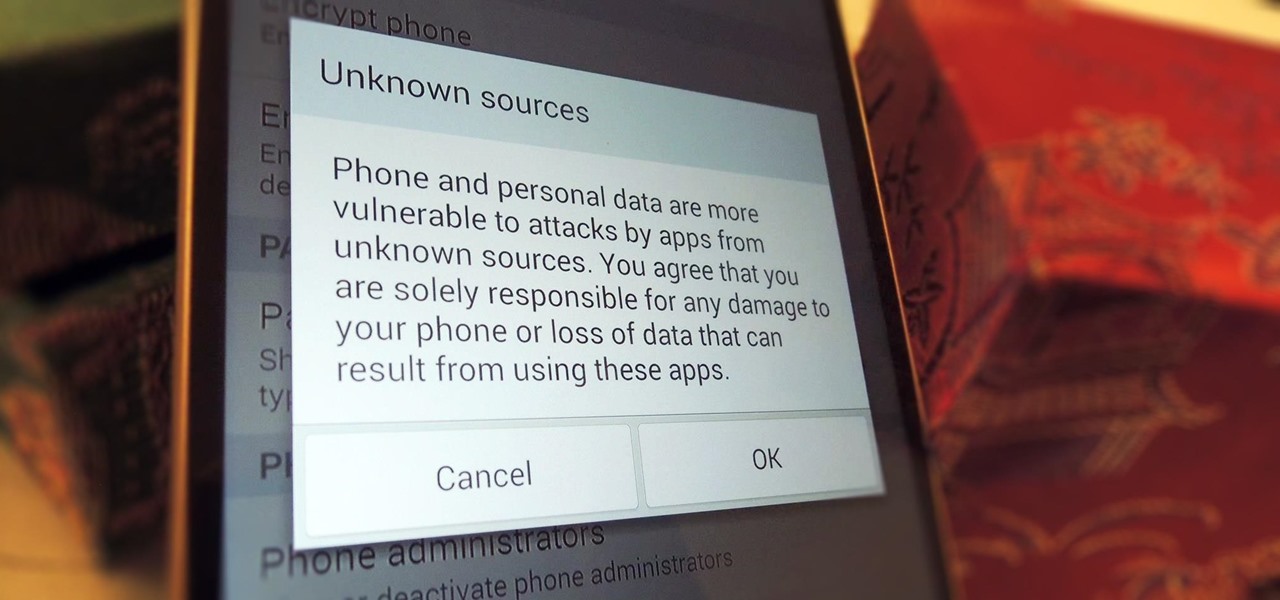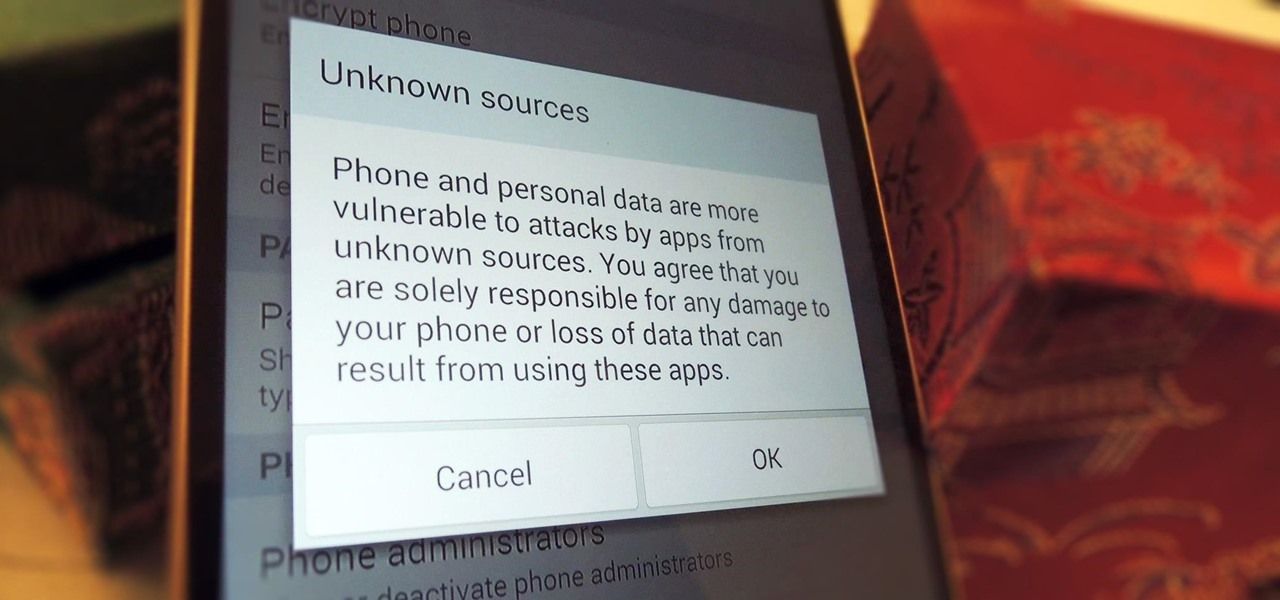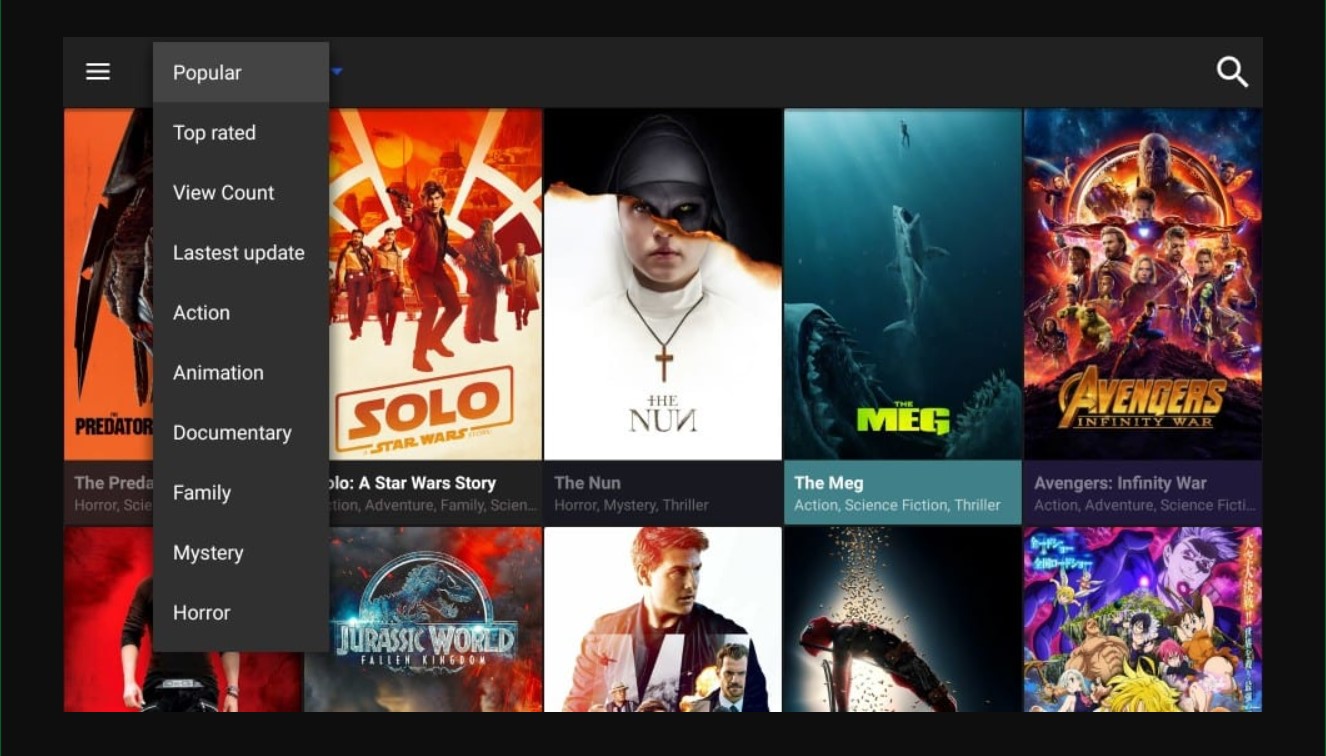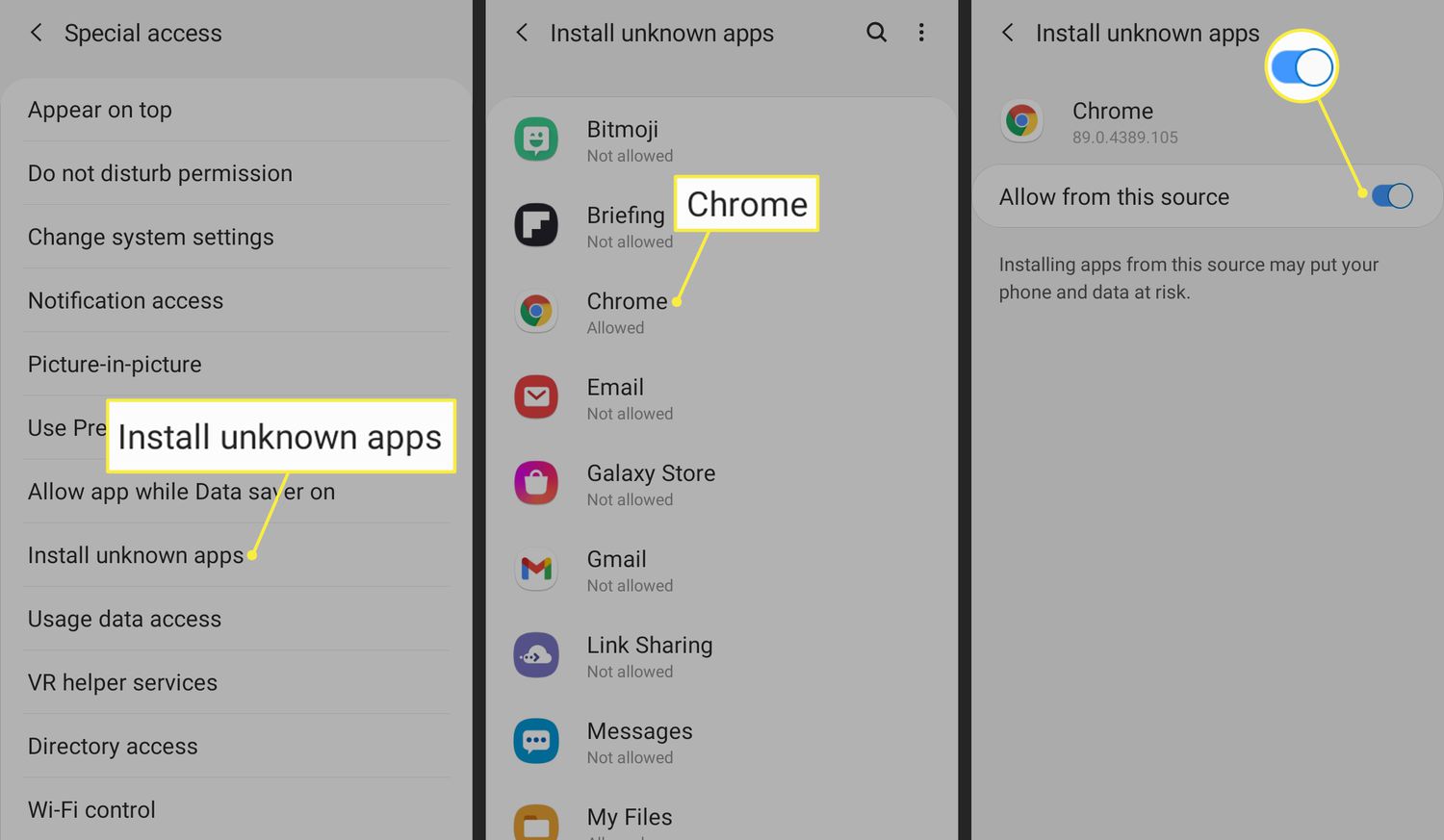Why Download Unknown Apps?
With millions of apps available on various platforms, it can be tempting to explore new and unknown apps that catch your attention. But before you download an app from an unfamiliar source, it’s important to understand the reasons why you might consider doing so.
1. Access to Unique Features: Unknown apps often offer unique and innovative features that may not be found in mainstream apps. These apps can provide a fresh and exciting experience, allowing you to explore new functionalities and capabilities.
2. Discovering Hidden Gems: Some lesser-known apps may not have gained widespread recognition but could hold immense value. By downloading unknown apps, you have the opportunity to discover hidden gems that can significantly enhance your productivity, entertainment, or personal development.
3. Alternative Options: Popular apps often dominate the market, leaving little room for new ideas and competition. By downloading unknown apps, you support smaller developers and encourage diversity in the app ecosystem, leading to increased innovation and choice for users.
4. Early Access to Beta Versions: Many app developers release beta versions of their apps for testing purposes. By downloading unknown apps, you can gain early access to these pre-release versions and provide valuable feedback to developers, helping to improve the app before its official launch.
5. Exploring Niche Interests: Unknown apps can cater to specific niches or cater to specialized interests that may not be covered by mainstream apps. If you have a unique hobby or interest, downloading unknown apps can lead you to communities and resources tailored specifically to your needs.
While there are legitimate reasons to download unknown apps, it is crucial to exercise caution and take necessary steps to ensure the safety and security of your device and personal data. In the following sections, we will explore various measures to assess the security risks associated with unknown apps and safeguard your device against potential threats.
Assessing Security Risks
When downloading unknown apps, it is essential to assess the potential security risks they may pose. While reputable app stores have rigorous vetting processes, apps from unfamiliar sources may not undergo the same level of scrutiny. Here are several factors to consider when evaluating the security risks of unknown apps:
1. App Source: Determine the source of the app. Stick to reliable and trusted platforms such as official app stores (like Google Play Store or Apple App Store) or reputable third-party app stores. Avoid downloading apps from suspicious websites or unfamiliar sources.
2. App Permissions: Read and understand the permissions requested by the app. Be cautious if an app requests unnecessary access to personal information or functions unrelated to its core functionality. Granting excessive permissions can compromise your privacy and security.
3. User Reviews and Ratings: Check user reviews and ratings for the app. This feedback can provide valuable insights into the app’s performance, reliability, and potential security concerns. Pay attention to reviews that mention any suspicious activities, malware, or data breaches.
4. App Developer Information: Research the app developer’s background and reputation. Look for information about previous apps they have developed, their track record, and any security incidents associated with their apps. Established developers with a good reputation are more likely to prioritize user security.
5. Malware Scans: Utilize antivirus and malware scanning software to scan the app before installation. These security tools can help detect and remove any malicious code or potential threats present in the app.
6. App Updates: Regularly update your apps to ensure that you have the latest security patches and bug fixes. Developers frequently release updates to address vulnerabilities and enhance app security. Avoid apps that are not regularly updated, as they may be more susceptible to security breaches.
Remember, it’s always best to err on the side of caution when it comes to unknown apps. If you have any doubts about an app’s security, it’s safer to refrain from downloading it. In the next sections, we will explore methods for verifying app sources and taking precautions while installing unknown apps from third-party sources.
Verifying App Sources
Before downloading unknown apps, it is crucial to verify their sources to ensure their legitimacy and trustworthiness. Here are some essential steps to follow when verifying app sources:
1. Official App Stores: Stick to downloading apps from official app stores like Google Play Store or Apple App Store. These stores are curated and have strict guidelines for app submissions, reducing the risk of downloading malicious or unsafe apps.
2. Developer’s Website: If the app is not available on official app stores, visit the developer’s official website. Verify the website’s authenticity by checking for secure connections (HTTPS) and researching the developer’s reputation. Make sure the developer’s website provides clear information about the app and offers a legitimate download link.
3. Third-Party App Stores: If you choose to download from a third-party app store, exercise caution. Research the reputation and reliability of the app store. Look for trustworthy and well-established third-party app stores that have positive user reviews and a robust vetting process for the apps they distribute.
4. Check App Signatures: When downloading apps from unofficial sources, verify the app’s authenticity by checking its digital signature. The digital signature ensures that the app has not been tampered with or modified. This step can help you identify counterfeit or malicious versions of popular apps.
5. Developer Contact Information: Legitimate app developers provide ways to contact them for support or inquiries. Look for clear and accessible developer contact information on their website or app store listing. This information adds credibility and shows that the developer is accountable for their product.
6. Research Online: Conduct research online to gather information about the app and its developer. Look for user reviews, discussions on forums, and any reported security issues associated with the app. This step can provide valuable insights into the app’s reputation and potential risks.
By following these steps, you can minimize the chances of downloading apps from untrustworthy sources and reduce the risk of compromising your device’s security. However, it’s important to remember that even verified sources can occasionally distribute malicious apps, so remaining vigilant is crucial. In the next section, we will discuss the importance of checking user reviews and ratings before downloading unknown apps.
Checking User Reviews and Ratings
One of the most reliable ways to assess the quality and safety of unknown apps is by checking user reviews and ratings. User feedback can provide valuable insights into the app’s performance, reliability, and potential security concerns. Here’s why checking user reviews and ratings is essential:
1. App Performance: User reviews can give you an idea of how well the app performs. Look for reviews that mention stability, responsiveness, and ease of use. Positive reviews often indicate that the app is reliable and delivers on its promises, while negative reviews may indicate bugs or performance issues to be wary of.
2. Security Concerns: User reviews can help identify potential security concerns with the app. Look out for reviews that mention malware infections, suspicious permissions, or unauthorized data collection. If multiple users report security issues, it’s a clear red flag indicating that the app may compromise your device’s security and privacy.
3. Authenticity: Reviews can help determine the authenticity of the app. Check for genuine reviews that discuss the app’s features, functionality, and user experiences in detail. Be cautious if you notice an overwhelming number of overly positive or overly negative reviews, as they may be influenced by fake or biased opinions.
4. App Updates: User reviews can provide insight into the developer’s commitment to maintaining and updating the app. Look for reviews that mention regular updates and bug fixes. Apps that receive frequent updates are more likely to address security vulnerabilities promptly and provide a better user experience overall.
5. Overall Rating: Take note of the app’s overall rating. A high rating indicates that the app is generally well-received by users, while a low rating may indicate significant issues. However, always dive deeper into user reviews to get a comprehensive understanding of the app’s strengths and weaknesses before making a decision.
While checking user reviews and ratings is crucial, remember that individual experiences can vary. Consider the overall consensus and the specific concerns raised in the reviews. This will help you make an informed decision about whether the app is safe and suitable for your needs. In the next section, we will discuss the importance of understanding app permissions before downloading unknown apps.
Understanding App Permissions
Before downloading unknown apps, it’s vital to understand the permissions they request. App permissions grant access to various functions and resources on your device. Understanding these permissions is essential to safeguard your privacy and ensure the app’s legitimacy. Here are key points to consider when assessing app permissions:
1. Only Grant Necessary Permissions: Carefully review the permissions requested by the app. Consider whether the app legitimately requires access to specific functions or data on your device. Be wary of apps that request unnecessary permissions that are unrelated to their core functionality.
2. Sensitive Data Access: Pay attention to permissions that involve accessing sensitive data, such as contacts, camera, microphone, and location. Determine whether the app’s purpose justifies the need for such data access. If you have concerns about privacy, consider using alternative apps with more limited permission requirements.
3. Consider Permission Requests in Context: Consider how the requested permissions align with the app’s intended purpose. For example, a photo editing app requesting access to your photo gallery is reasonable, while a flashlight app requesting access to your contact list may be suspicious. Exercise caution if you find permission requests that seem excessive or unrelated.
4. Review Permission Changes: Be vigilant about permission changes after app updates. Developers may introduce new permissions or modify existing ones. Review these changes before updating the app to ensure they align with your privacy and security preferences. If you’re uncomfortable with the new permissions, consider seeking alternative apps.
5. Android Permissions Categories: On Android devices, app permissions are organized into categories. Familiarize yourself with these categories, such as “Camera,” “Contacts,” “Location,” and “Storage,” to better navigate and evaluate permission requests.
6. App Permission Settings: Take advantage of the app permission settings provided by your device’s operating system. These settings allow you to grant or revoke specific permissions on an app-by-app basis. Regularly review and adjust these settings to maintain control over your privacy and security.
By understanding and carefully considering app permissions, you can make informed decisions about which apps to trust and download. Remember, it’s better to be cautious and prioritize your privacy and data security when granting permissions. In the next sections, we will discuss installing unknown apps from third-party app stores and sideloading apps from external sources.
Installing from Third-Party App Stores
While official app stores like Google Play Store and Apple App Store provide a secure environment for downloading apps, some users may choose to explore third-party app stores for various reasons. If you decide to download apps from third-party stores, it’s important to take precautions to ensure the safety of your device. Here’s what you need to know:
1. Research the App Store: Before using a third-party app store, research its reputation and credibility. Look for information about the store’s history, user reviews, and any reported security issues. Stick to well-established and trusted third-party app stores to minimize the risk of downloading malicious apps.
2. Check App Verification: Some third-party app stores have a verification process to ensure the apps they distribute are safe and legitimate. Look for apps marked as “verified” or “trusted” by the app store. This indication provides an added layer of assurance that the apps have undergone scrutiny and meet certain security standards.
3. Enable App Store Security Settings: Configure your device’s security settings to only allow app installations from trusted sources. This setting can help prevent accidental installations of apps from unknown or potentially harmful sources.
4. Read App Descriptions: Pay close attention to app descriptions in third-party app stores. Look for detailed information about the app, its features, and the developer. Be cautious if the app description appears vague or if crucial details are missing, as it may indicate an untrustworthy or malicious app.
5. Consider User Reviews: User reviews in third-party app stores can provide insights into the app’s performance and security. Check for recent reviews to ensure that the app remains safe and reliable. Take note of any red flags mentioned in the reviews, such as suspicious behaviors or security concerns.
6. Regularly Update Apps: Just like with apps from official app stores, it’s crucial to regularly update apps downloaded from third-party stores. Developers may release updates to patch vulnerabilities or address security issues. By keeping your apps up to date, you reduce the risk of falling victim to known security exploits.
While third-party app stores provide additional options for app downloads, remember that they may have a higher risk of distributing malicious apps. Use caution and common sense when downloading from these stores and consider the potential trade-off between app variety and security. In the next section, we will explore the process of sideloading apps from external sources.
Sideloading Apps from External Sources
Sideloading refers to the process of manually installing apps on your device from external sources, bypassing the official app stores. While sideloading can provide access to a wider range of apps, it also introduces additional risks. If you choose to sideload apps, it’s important to take the following precautions:
1. Only Download from Trusted Sources: When sideloading apps, ensure that you download them from reputable and trustworthy sources. Stick to well-known websites or developer forums that have a track record of providing legitimate and safe apps. Avoid downloading apps from unknown or suspicious sources.
2. Verify App Authenticity: Before sideloading an app, verify its authenticity. Check the app developer’s official website or other reliable sources to ensure the app’s legitimacy. Beware of counterfeit or modified versions of popular apps, as they may contain malware or compromised features.
3. Scan Apps for Malware: Use antivirus software or malware scanners to scan the app file before sideloading. These tools can detect any malicious code or potential threats present in the app. Regularly update your antivirus software to ensure it has the latest malware definitions.
4. Review App Permissions: Prior to sideloading, review the app’s requested permissions. Be cautious of apps that request excessive permissions or access to sensitive information without a valid reason. Grant permissions only to apps that genuinely require access to specific functions or data on your device.
5. Be Wary of Unknown Developers: Exercise caution with apps from unknown developers when sideloading. Research the developer’s reputation, previous app releases, and any reported security incidents. Trusted developers are more likely to prioritize user safety and security.
6. Consider Using a Virtual Environment: To mitigate risks associated with sideloading, consider using a virtual machine or sandbox environment. These tools create isolated environments that separate the sideloaded app from your main operating system, minimizing the potential impact of any malicious activity.
It’s important to be aware that sideloading apps from external sources carries inherent risks. By following these precautions, you can minimize the chances of compromising your device’s security. However, always weigh the benefits against the potential risks and exercise caution when deciding to sideload apps. In the next sections, we will discuss additional measures to enhance your app downloading and usage security, such as utilizing Virtual Private Networks and employing antivirus and malware scanners.
Utilizing Virtual Private Networks (VPN)
When downloading and using apps, especially from unknown or untrusted sources, utilizing a Virtual Private Network, or VPN, can significantly enhance your security and privacy. A VPN establishes an encrypted connection between your device and the internet, protecting your data from potential threats. Here’s how VPNs can benefit you:
1. Secure Data Transmission: A VPN creates a secure tunnel for your internet traffic, making it difficult for hackers or malicious entities to intercept your data. This is especially crucial when you’re downloading apps, as it safeguards your personal information from being exposed during the download process.
2. Protection on Public Wi-Fi: When connected to public Wi-Fi networks, your data becomes vulnerable to interception. By using a VPN, your data is encrypted, adding an extra layer of security and making it much more challenging for cybercriminals to access your sensitive information.
3. Bypassing Region Restrictions: In some cases, certain apps or app features may be restricted based on your geographical location. A VPN can help bypass these restrictions by allowing you to connect to servers in different countries, making it appear as if you are accessing the app from a permitted location.
4. Preventing ISP Tracking: Internet Service Providers (ISPs) have the ability to monitor your online activities and track your app downloads. By using a VPN, your internet traffic is encrypted and routed through the VPN server, preventing your ISP from monitoring your app downloads and usage.
5. Anonymity and Privacy: VPNs provide a level of anonymity and privacy by masking your IP address and encrypting your internet traffic. This prevents apps, websites, and other entities from tracking your online activities and collecting personal information without your consent.
When using a VPN, it’s important to choose a reputable provider that prioritizes strong encryption and does not keep logs of your online activities. Additionally, ensure that the VPN provider has servers in locations that align with your needs, such as accessing geo-restricted apps or minimizing latency during app downloads.
While VPNs offer significant benefits, it’s essential to note that they are not foolproof. It’s still crucial to exercise caution when downloading and using unknown apps, even when connected to a VPN. Implementing multiple layers of security, such as using VPNs in conjunction with other security measures, can further enhance your protection.
In the next section, we will discuss the importance of employing antivirus and malware scanners to detect and mitigate potential threats associated with app downloads.
Employing Antivirus and Malware Scanners
When downloading apps, whether from official app stores or unknown sources, it’s crucial to employ antivirus and malware scanners to detect and mitigate potential threats. Antivirus and malware scanning software provide an additional layer of security by identifying and removing malicious software from your device. Here’s how employing these scanners can benefit you:
1. Detecting Malicious Code: Antivirus and malware scanners are designed to detect and identify known patterns or signatures of malicious code. By scanning downloaded apps, these tools can flag any potential threats, including viruses, trojans, spyware, and other forms of malware.
2. Real-Time Protection: Many antivirus and malware scanners offer real-time protection, continuously monitoring your device for any suspicious activity. This proactive approach helps prevent malicious apps from running, protecting your device and data from potential harm.
3. Web Protection: Some antivirus and malware scanning tools provide web protection, scanning websites and URLs to detect and block potentially dangerous or malicious content. This feature can prevent you from inadvertently downloading apps from unsafe websites.
4. App Behavior Analysis: Advanced antivirus and malware scanners analyze app behavior to identify suspicious activities or patterns. This includes monitoring app network connections, file access, and system changes. If an app exhibits unusual or malicious behavior, the scanner can alert you or take appropriate action.
5. Regular Updates: Antivirus and malware scanners frequently update their databases to include the latest threat definitions. These updates ensure that the scanners can effectively identify and protect against new and emerging threats, providing you with up-to-date security coverage.
When selecting antivirus and malware scanning software, choose reputable and well-established vendors that offer regular updates and a robust set of features. Ensure that the software is compatible with your device and fits your specific security needs. Additionally, combining multiple layers of security, such as using antivirus software alongside a VPN, can provide comprehensive protection against potential threats.
Remember to regularly update your antivirus and malware scanning software to ensure it has the latest threat intelligence and security features. Regular scanning of downloaded apps and periodic full system scans help maintain the overall security and integrity of your device.
In the next section, we will emphasize the importance of ensuring regular updates for downloaded apps to stay protected against security vulnerabilities.
Ensuring Regular App Updates
Regularly updating your downloaded apps is essential for maintaining the security and performance of your device. App updates often include security patches, bug fixes, and new features, which help protect against known vulnerabilities and improve overall functionality. Here are the reasons why ensuring regular app updates is crucial:
1. Security Patches: App developers release updates to address security vulnerabilities that have been discovered in previous versions. These vulnerabilities can be exploited by cybercriminals to gain unauthorized access to your device or steal your personal information. By updating your apps, you ensure that you have the latest security patches installed, reducing the risk of potential security breaches.
2. Bug Fixes: App updates often include bug fixes that address issues identified in earlier versions. Bugs can range from minor glitches to significant security vulnerabilities. Regularly updating your apps ensures that these bugs are resolved, improving the overall stability and performance of the app.
3. New Features and Improvements: App updates frequently introduce new features and enhancements that can enhance your user experience. By keeping your apps up to date, you can take advantage of these new functionalities and improvements, making your app usage more enjoyable and efficient.
4. Compatibility: As operating systems and devices evolve, apps may need to be updated to ensure compatibility. App updates often include optimizations and adjustments to ensure smooth operation on the latest devices and software versions. Failing to update your apps may result in compatibility issues or decreased performance.
5. Preventing Exploitation: Cybercriminals are constantly searching for vulnerabilities in apps and trying to exploit them. App updates frequently address known vulnerabilities exposed by these malicious actors. By promptly updating your apps, you stay one step ahead of potential exploitation attempts and reduce the risk of falling victim to cyber threats.
Enabling automatic updates for your apps is an effective way to ensure regular updates without manual intervention. Most app stores provide an option to automatically update your installed apps whenever new versions are available. This feature saves time and ensures that your apps are always up to date, benefiting from the latest security patches and improvements.
While regular app updates are crucial, it’s important to note that updates should be obtained from legitimate sources, such as official app stores. Be cautious of unofficial or unauthorized updates, as they may compromise the security and integrity of your device.
In the next section, we will discuss the importance of regularly removing unknown apps from your device to maintain a clean and secure app environment.
Removing Unknown Apps
Maintaining a clean and secure app environment is essential for the overall security and performance of your device. Removing unknown apps that you no longer use or are unfamiliar with can help reduce potential security risks. Here’s why regularly removing unknown apps is important:
1. Reducing Attack Surface: Every app on your device increases the potential attack surface for cybercriminals. Unknown apps that you have downloaded from unreliable sources may contain hidden vulnerabilities or malicious code that can be exploited. By removing these apps, you minimize the potential entry points for unauthorized access or malicious activity.
2. Protecting Personal Data: Unknown apps may access and collect personal data without your knowledge or consent. This data can be used for targeted advertising, identity theft, or other malicious purposes. By removing unfamiliar apps, you restrict potential access to your personal information and protect your privacy.
3. Optimizing Device Performance: Unused or unfamiliar apps can consume valuable system resources, such as storage space, memory, and processing power. By removing these apps, you free up resources, leading to improved device performance and responsiveness.
4. Minimizing Security Risks: Unknown apps are often more susceptible to security vulnerabilities, as they may not receive regular updates or undergo thorough security checks. These apps can be easy targets for cybercriminals looking to exploit weaknesses. By removing unknown apps, you reduce the potential risks associated with outdated or insecure software.
5. Organizing Your App Library: Regularly reviewing and removing unknown apps helps you maintain an organized and clutter-free app library. This allows for easier and more efficient app navigation, ensuring that you can quickly find and access the apps you truly need.
When removing apps from your device, take extra caution with apps that may contain sensitive or valuable data. Back up any relevant data associated with the app before removing it. Additionally, ensure that you follow proper uninstallation procedures specific to your device’s operating system to avoid leaving behind any remnants of the app.
Regularly reviewing and auditing the apps installed on your device is a good practice to maintain a clean and secure app environment. Consider establishing a routine to periodically assess and remove unknown or unused apps to ensure optimal security and performance.
In the final section, we will summarize the key takeaways and emphasize the importance of implementing these practices to ensure a secure and hassle-free app experience.

























